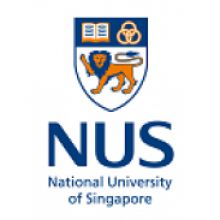Singapore’s two main universities are making major changes to their curricula and structures to encourage interdisciplinarity and give students the skills they need in the post-Covid world.
The National University of Singapore (NUS) has brought together its largest and most established faculties – the Faculty of Arts and Social Sciences and the Faculty of Science – into a new College of Humanities and Sciences, co-headed by the faculties’ two deans. Students entering in 2021 can choose any combination of major, second major, minor or specialty.
Sun Yeneng, the science dean, told Times Higher Education that he hopes students will come away with the “integrated thinking skills” increasingly sought after in a “volatile, uncertain, complex and ambiguous world”.
“Their learning will be deepened when they reflect on the connections between ideas and concepts across different disciplines,” he said.
Robbie Goh, NUS’ arts and social sciences dean, told THE that there is “increasing awareness in academia, industry and government that developing effective solutions to major real-world challenges requires a working knowledge and skills acquired…in both STEM and humanities and social sciences subjects”.
He said that common core curricula traditionally involved “baskets of disciplines…that bear little regard for the connection between courses”. NUS’ new college has a curriculum that was “conceptualised incorporating specially designed courses to introduce our students to interdisciplinarity”, he said.
Nanyang Technological University, Singapore, has been piloting a new common core curriculum, which will be fully introduced in 2021-22. The pilots involved three colleges: engineering, science, and humanities and social sciences. The final modules will focus on specific challenges such as climate change or global health.
“As educators, we often ask ourselves, what makes an educated person?” asked the NTU president, Subra Suresh. “Those who can thrive in this rapidly changing global environment will have broader interest and knowledge outside of their specific disciplines, while also possessing some deep domain expertise.”
The push towards interdisciplinarity has been happening over the past year, for example with the opening of NUS’ Centre on AI Technology for Humankind (AiTH).
David De Cremer, AiTH’s director and a business professor, told THE that “as a society, we need to be careful that we do not overemphasise the importance of technology education over social sciences”.
He warned that “rapid technological development and messages from gurus that ‘if you don’t become tech-savvy enough, you will be left behind’ has instilled a certain fear among people that they may miss out on career opportunities if they do not think like data scientists.
“However, if we sideline social sciences in our educational efforts, then we are creating future generations that will think, act and reason like machines. What’s the point in being a half-baked machine who does not know how to interact with other humans?”
In a report for Harvard Business Review in March, Professor De Cremer co-wrote with Garry Kasparov that “AI should augment human intelligence, not replace it”.
Mr Kasparov, the chess great who famously battled IBM’s Deep Blue computer, said during an AiTH webinar that education was the one field to have stalled in its development.
“If someone from the 19th century was transported to today, he would recognise nothing except for the classroom, where the teacher in the front of the class is the sole authority,” he said. “Any student, with a swipe of the finger on a phone, has access to more data in a few seconds than any professor could ever teach. And so we have to teach them how to process that data.”
Register to continue
Why register?
- Registration is free and only takes a moment
- Once registered, you can read 3 articles a month
- Sign up for our newsletter
Subscribe
Or subscribe for unlimited access to:
- Unlimited access to news, views, insights & reviews
- Digital editions
- Digital access to THE’s university and college rankings analysis
Already registered or a current subscriber? Login











